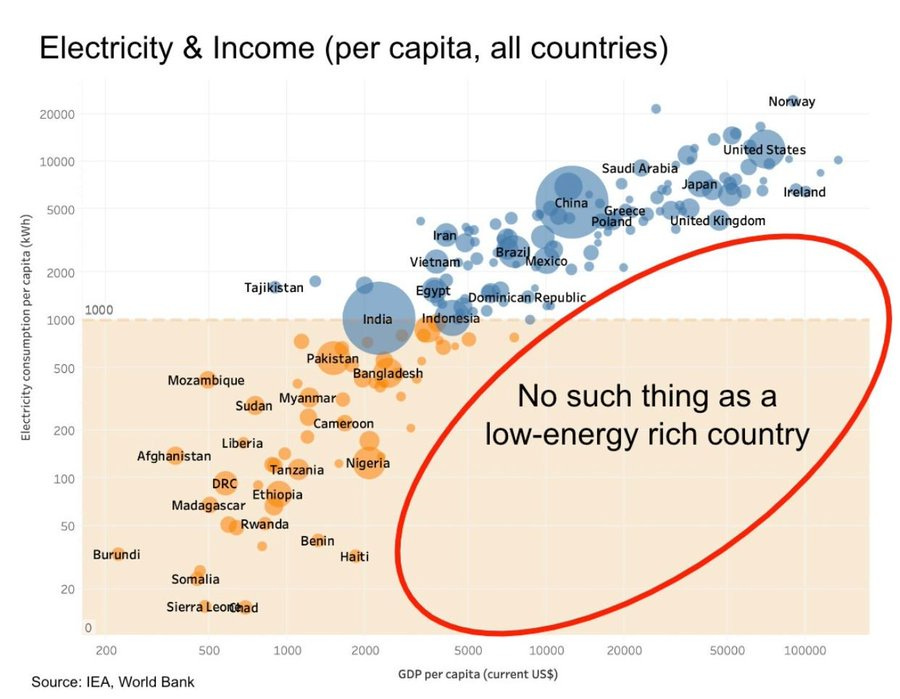The defining question of political economy in the 21st century will not be “Who has the labor and capital?” but “Who controls the energy and compute?”
The End of Classical Constraints
For centuries, economics rested on a deceptively simple premise. The economy is constrained by capital and labor.
In agrarian societies, land and physical toil determined output.
In industrial economies, machines and factory workers were the bottlenecks.
In the 20th century, human capital and financial capital took over as the primary levers of productivity.
Now, in the age of burgeoning artificial intelligence, those constraints are dissolving.
GPT-4 can write and reason. Claude Sonnet can code. Optimus robots can walk, climb, and carry. When AI handles cognition and robotics handle manipulation, there is little left for humans to do in the productive loop.
Unless you control the compute and energy that make these systems work.
We are not entering a post-capitalist world. We are entering a techno-capitalist world, where the constraints are no longer labor and capital. The constraints are energy and compute. What comes next is Infonism.
What Is Infonism?
Infonism is a term I invented to describe an economic system where information, compute, and energy replace labor and capital as the primary constraints on value creation.
It’s not just about owning data. It is about orchestrating a vertically integrated pipeline that transforms raw data into agency, prediction, and control.
Here’s how the components break down:
Energy is the metabolic cost of modern civilization. AI models need electricity. Robots need batteries. Data centers need cooling. Every additional unit of intelligence requires an inverse increase in the number of available watts.
Compute is the new capital. Economic power increasingly depends on access to TPUs, GPUs, and custom silicon. A company with $10 million in NVIDIA hardware has more leverage than one with $10 million in cash.
Information, or more precisely informational agency, is the ultimate source of leverage and productivity. The most valuable firms and individuals will be those who can route, compress, and act on knowledge at scale.
Infonism, at its heart, is about ownership and control of the systems that convert information into outcomes. It is about turning data into automation, insight, coordination, and dominance.
Energy as a Sovereign Asset
Without energy, there is no intelligence.
Whether training a sovereign AI model, powering a city, or training smart defense systems, intelligence runs on electricity. The future will belong to those who can generate abundant, reliable, and low-latency power.
That includes investing in fusion, nuclear fission, geothermal energy, and space-based solar. These are no longer niche green dreams. They are geopolitical necessities. Without energy, intelligent systems can’t scale. And if your intelligence is capped, so is your economic potential and regional hegemony.
Compute as a Strategic Monopoly
Compute is not just expensive. It is geopolitically constrained.
NVIDIA dominates the high-performance AI market. TSMC fabricates most cutting-edge chips. ASML is the sole provider of extreme ultraviolet lithography systems, critical for manufacturing the most advanced semiconductors. The entire pipeline from rare earths to lithography is fragile and heavily concentrated to a few locations.
As more economic value flows through LLMs, RL agents, and autonomous machines, access to compute becomes a sovereign priority. This is why governments are rushing to secure AI infrastructure. Sovereign models and domestic fabs are not luxuries. They are strategic imperatives.
Old Scarcity, Meet New Scarcity
In an Infonist world, we do not run out of labor. We run out of:
Cooling for data centers
Lithium and cobalt for batteries
Bandwidth to move large models
Electrons to power inference
This completely reverses the traditional logic of economic scarcity. We are not constrained by people. We are constrained by infrastructure.
That means the future of growth lies in scaling power grids, optimizing inference, and embedding intelligence into the material world. It is about deploying systems that run autonomously at scale.
Governance in an Infonist World
Who governs in this new paradigm?
There are two dominant models, and likely a hybrid that will emerge between them.
State-Led Infonism
This model is centralized and institutional. Governments fund fusion research, build sovereign LLMs, and deploy AI at scale in public infrastructure. It looks like a reboot of industrial policy, but optimized for the compute age. China is arguably the furthest along this track.
Network-Led Infonism
This is decentralized and protocol based. Compute is coordinated via on-chain AI marketplaces. Energy is distributed via smart grids. Decision making is handled by DAOs or new forms of participatory protocols.
This model is messy but agile. It moves faster, coordinates more creatively, and evolves from the bottom up.
Hybrid Architectures
Most likely, the real future is a mix. Nation states fund Manhattan Project initiatives to spur progress in energy and fabs, while the private sector handles the fluid layer of innovation, experimentation, and compute routing.
Where Do Humans Fit In?
Plenty of traditional white and blue collar jobs will be automated by AI and robotics. The “social media manager” of today will go the way of the “switch board operator” of yesterday.
Jobs come and go. New industries are created. New jobs-to-be-done emerge. There is inherent complexity in dynamic systems that machines will not be able to do. And there is inherent dignity in meaningful work that humans find satisfaction in.
The goal of Infonism is not a post labor world where the government gets big enough to fund UBI for a population of existential louses.
The goal is to unlock a period of unprecedented abundance for humanity and allow individuals to use the tools at their disposal to automate meaningless tasks and unlock more time for vocational work, upward social mobility, and leisure.
From Capitalism to Infonism
Is Infonism just another phase of capitalism?
Not exactly.
The goal of Capitalism is the endless accumulation of capital.
The goal of Infonism is the democratization of abundance through distributed intelligence.
Capitalism provides a framework for how to distribute resources.
Infonism provides a framework for how we allocate intelligence.
Capitalism focuses on deploying labor and capital efficiently.
Infonism focuses on routing information, compute, and energy through self-organizing systems to sovereign individuals who can scale them.
The difference is more than branding. It is a shift in the fundamental architecture of economic coordination and limiting factors.
The Moral Is the Infrastructure
The 21st century was a battle between these two questions.
How should we distribute resources?
Through the self interest of informed agents driven by the profit motive, trading products and services in a free market?
Or from each according to their ability, should flow resources to each according to their need?
These two questions defined the 20th century. And in terms of which memetic idea survived extended contact with reality, we can only crown capitalism the winner.
But the question of the 21st century is not about the invisible hand of the market.
The question is whether your complex system coordinates energy, compute, and information better than others.
Those who build the infrastructure will build the future.
Those who delay will rent it from them, and forfeit their economic and cultural hegemony.






I was just in Southeast Asia. Infonism is very much the dominant mindset in that region. From my American vantage point, it felt like I was looking into the future. From a global vantage point, I was definitely looking at the present.
The centralization of the machine economy really is a irresistible Force. Many regions are very susceptible to believing AI is the end all and be all, which conveniently hands over power to others.